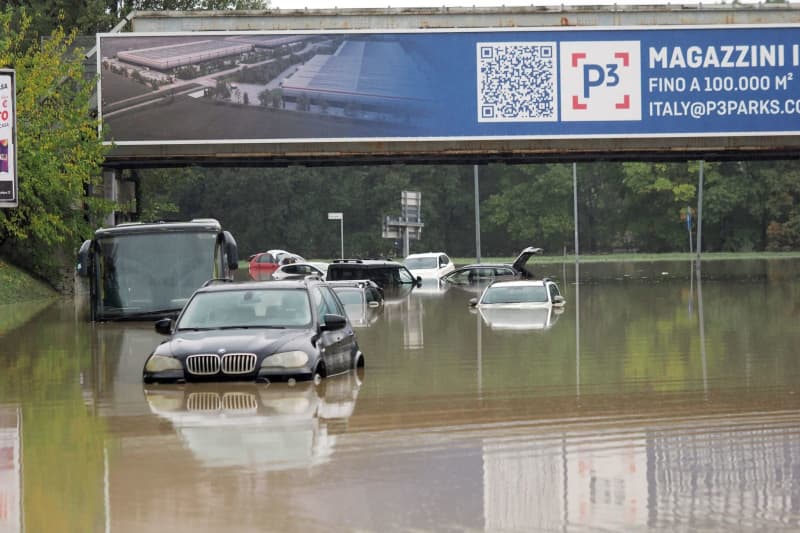Heavy rainfall in northern Italy has forced thousands of residents to evacuate their homes, particularly in the Bologna area, where over 2,000 people sought refuge in emergency shelters or with relatives. The severe weather has caused extensive flooding, submerging numerous streets and leading to tragic incidents, including the death of a 20-year-old man who was trapped in his car amidst the rising waters. The situation has highlighted the vulnerabilities of various regions in Italy as they grapple with increasingly severe weather events, underscoring the necessity for proper emergency planning and response mechanisms to protect citizens during such disasters.
The Emilia-Romagna region, where Bologna serves as the capital, has been hit hard by storms that have resulted in substantial economic damage, with estimates suggesting losses amounting to several million euros. The infrastructure in many areas is struggling to cope with the dramatic weather changes, leading to reports of widespread destruction, particularly to cars and property caught in the floodwaters. The situation has raised concerns about the long-term impacts of extreme weather on the economy of the region, which is known for its agriculture and tourism sectors.
Additionally, flooding has not been confined to northern Italy. Southern regions, including Calabria and Sicily, have experienced similar weather patterns, leading to flooded city centers that have disrupted daily life. Videos emerging from affected areas depict parked cars being swept away and scooters floating through flooded streets, painting a grim picture of the extensive reach of the storm’s effects. This widespread impact highlights that heavy rainfall and flooding are not isolated incidents, but part of a larger pattern affecting the entire country.
Meteorologists have noted that while the current situation is grave, there is an anticipation of improving weather conditions in the coming days. Nevertheless, the recent events serve as a reminder of the precarious balance between human habitation and the forces of nature, especially in regions that are susceptible to flooding. The gradual easing of the weather may provide relief for those currently displaced, but it does not negate the need for ongoing vigilance in the face of potential future storms.
Local authorities are likely to face significant challenges in recovery and rebuilding efforts. With thousands displaced and infrastructure damaged, coordinated responses will be crucial to restore normalcy in the affected regions. The focus will need to shift not only to immediate humanitarian aid for those impacted but also to long-term strategies for flood management and climate resilience, especially given the increasing frequency of such severe weather events linked to global climate change.
In conclusion, the recent flooding in Italy, particularly in Bologna and the broader Emilia-Romagna region, underscores the importance of emergency preparedness and infrastructural resilience in the face of extreme weather. As residents work to recover from this disaster, the need for effective planning, responsive governance, and community support will be more evident than ever, ensuring that challenges posed by climate-related incidents are met with proactive strategies for sustainability and safety. This calamity serves as a stark reminder of the power of nature and the critical necessity for coordinated efforts in disaster response and recovery.

